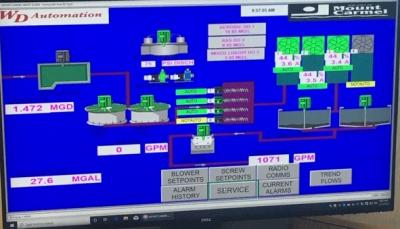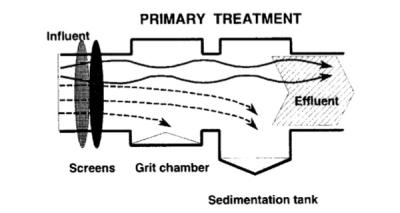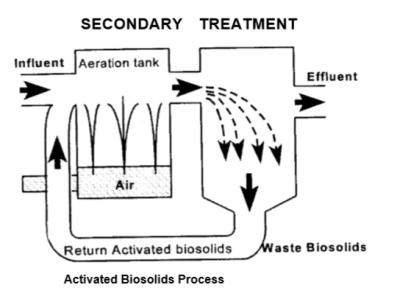
The city of Mount Carmel's waste water treatment facility is a biological processing treatment plant that utilizes grit removal, primary settling and biological treatment to remove residential and commercial sanitary sewage.
The facility which was originally built in the 1950’s is rated to treat approximately 720 million gallons annually. The facility experienced major plant upgrades in the late 1970’s, and we just completed a major renovation in 2019 that has allowed the city of Mount Carmel to meet and exceed environmental standards.
The newest renovation at the facility has allowed operators to gather, process, and utilize data by means of modern SCADA type telemetry.
The Process
The city has 10 lift stations strategically located throughout the sanitary sewer system to deliver sanitary waste to the treatment facility. These station are monitored 24 hours a day 7 days a week via electronic monitoring and 5 days a week by personnel.
Our EPA reporting requirements range from monthly discharge monitoring, quarterly sludge reports, semiannual sludge disposal and annual fiscal reporting.

Primary Treatment
As sewage enters our plant for treatment, it enters into a grit chamber. Sewage water contains large particles and grit that can interfere with the treatment process or cause undue mechanical wear, and increase maintenance on waste water treatment equipment. The grit chamber allows the sand or gravel that wash into sewers along with storm water to settle to the bottom. It then flows through a screen, which removes large floating objects such as rags and sticks that might clog pipes or damage equipment. After sewage has been screened, we take samplings to establish a baseline.
These solids are minute particles that are then removed from sewage in a sedimentation tank. By reducing the speed of the flow through this process, the suspended solids will gradually sink to the bottom, where they form a mass of solids called raw primary biosolids formerly sludge. Biosolids are removed from tanks by pumping, after which it is further treated for use as a fertilizer. Primary treatment alone is unable to meet EPA demands for higher water quality. To meet them, we have a secondary treatment to remove nutrients and other contaminants.

SECONDARY TREATMENT
Activated Biosolids Process
The activated sludge process speeds up the work of the bacteria by bringing air and sludge heavily laden with bacteria into close contact with sewage. After the sewage leaves the settling tank in the primary stage, it is pumped into an aeration tank, where it is mixed with air and sludge loaded with bacteria and allowed to remain for several hours. During this time, the bacteria break down the organic matter into harmless by-products. The sludge, now activated with additional billions of bacteria and other tiny organisms, can be used again by returning it to the aeration tank for mixing with air and new sewage. From the aeration tank, the partially treated sewage flows to another sedimentation tank for removal of excess bacteria. To complete secondary treatment, effluent from the sedimentation tank is disinfected with chlorine. The Chlorine is fed into the water to kill pathogenic bacteria, and to reduce odor. This process will kill more than 99 percent of the harmful bacteria in an effluent. Sampling is conducted at this point to ensure that all EPA regulations and permits are met prior to returning water to the environment.
Directions
Sewer Plant
125 S. Division Street
Mount Carmel, IL 62863
United States
